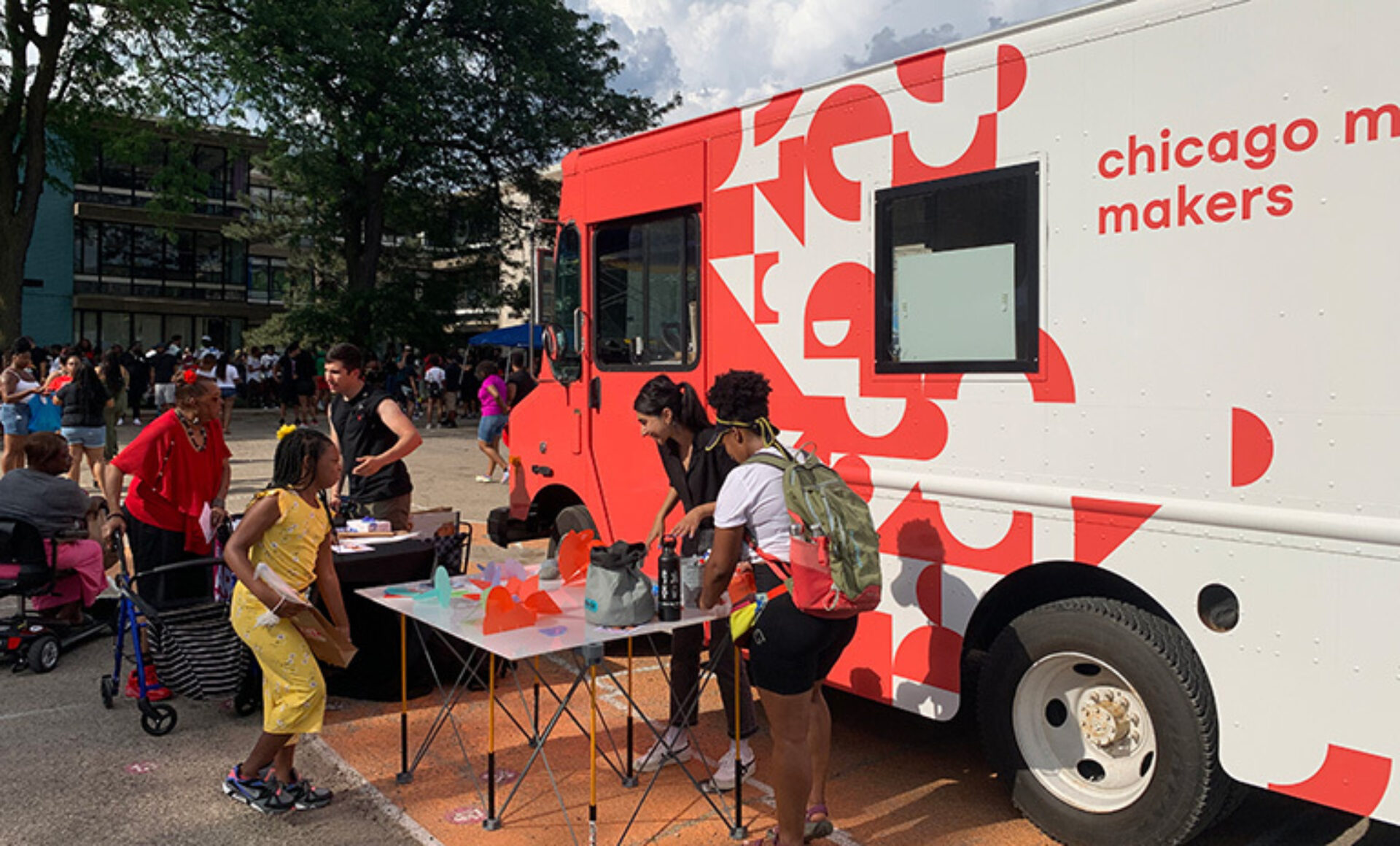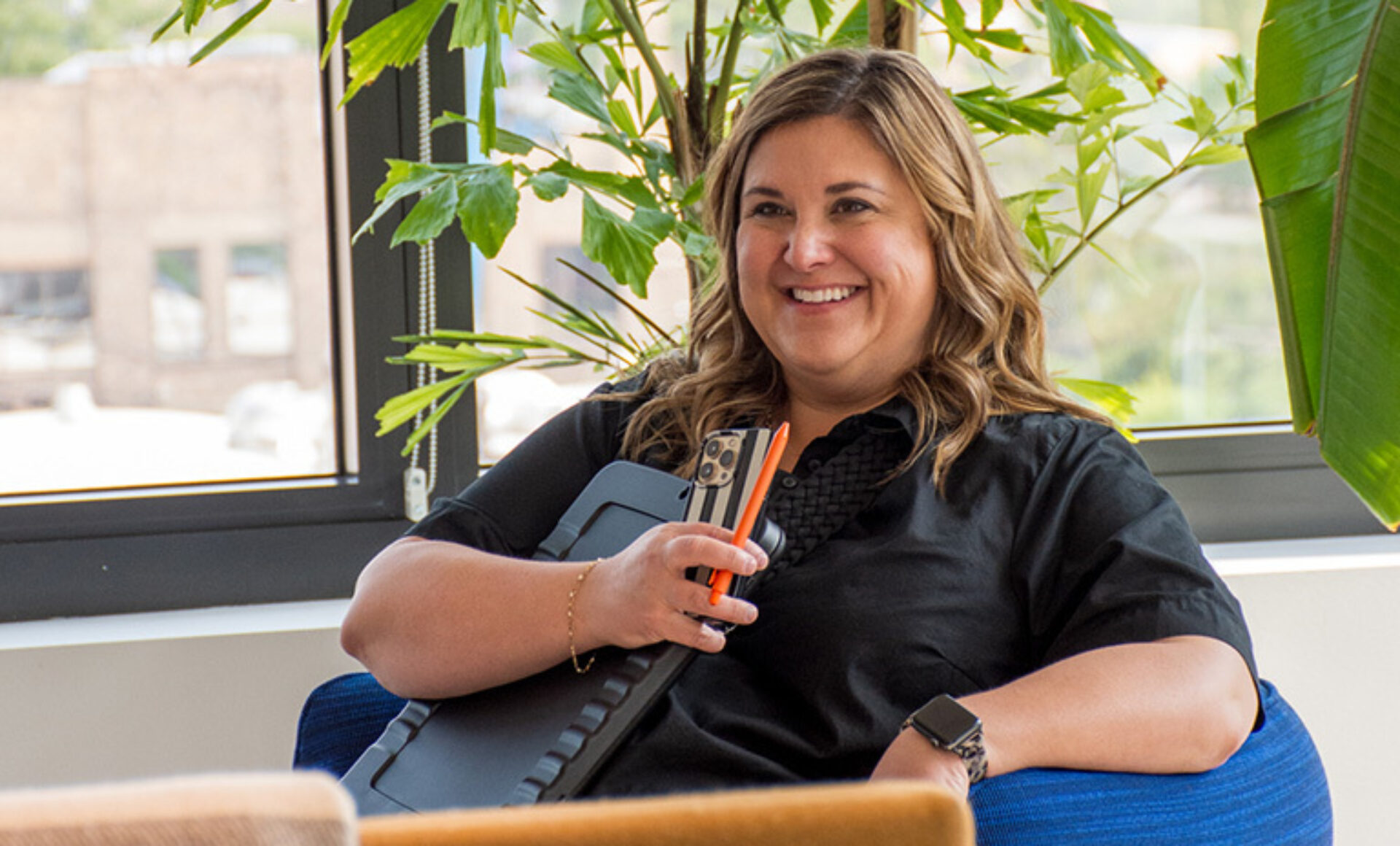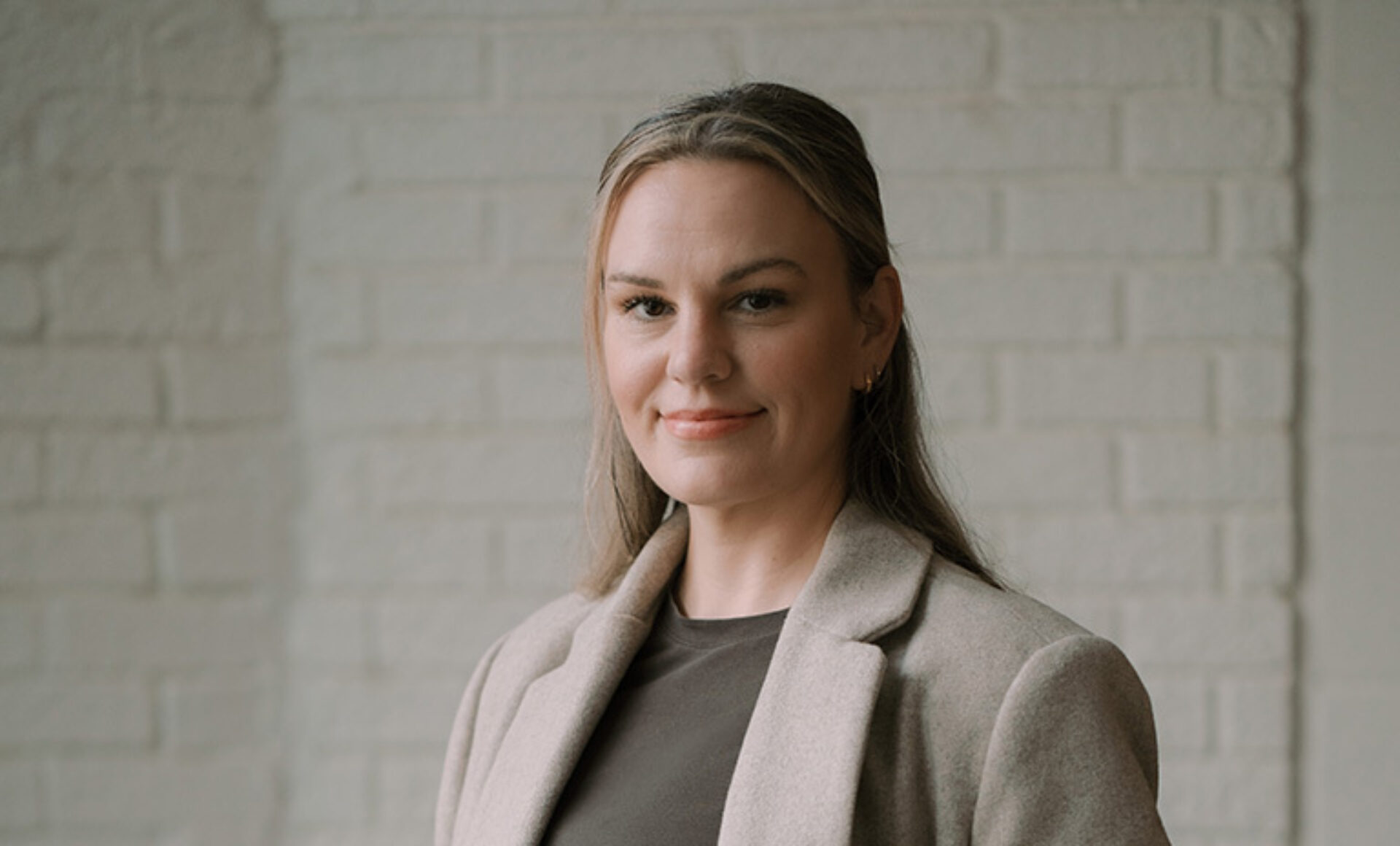Advice is like a cup of coffee — available practically everywhere, but much of it is middle-grade. The really good stuff is harder to find. Fortunately, there was a bounty of great advice on offer during a recent panel discussion at Morgan State University in Baltimore, where four highly accomplished designers gathered to share top-notch career guidance with design students.
The panel was part of an afternoon celebrating the establishment of an IIDA campus center at Morgan State, a historically Black university, through the Tarkett + IIDA P.A.T.H. Initiative, an effort to invest in architecture and design programs at HBCUs. With support from flooring manufacturer Tarkett, 10 Morgan students and one educator received free IIDA memberships and resources to help the campus center grow and thrive.
Moderated by Mike Johnson II, FIIDA, AIA, NOMA, Associate Principal and Director of Interiors at Hickok Cole, the panel also included Kelley Dorsett, IIDA, Senior Interior Designer and Professional Associate at HDR; Jeffrey Moaney, IIDA, Design Director and Senior Associate at Gensler; and Designer Mimi Pierrot, Assoc. IIDA, at OTJ. Before the conversation began, Tarkett’s Vice President of Design, Omoleye Simmons, gave students a glimpse into her own journey to design.
The panel topic? How to get that first design job.
Below you’ll find five pieces of essential advice on cultivating a design career — plus a bit of backstory about each speaker’s path to design. While these nuggets might be most beneficial for emerging designers, pros might also find some useful tips or helpful reminders. After all, when good advice is on the table, best not to turn it down.

Senior Interior Designer and Professional Associate
HDR

Associate Principal and Director of Interiors
Hickok Cole

Design Director and Senior Associate
Gensler

Designer
OTJ
Don’t be afraid to pivot — and pivot again.
Kelley Dorsett comes from a family of doctors, but she was drawn to art. She started college at Hampton University as an architecture major but ultimately discovered that her heart was in interiors. After two years, she switched her major to interior design and still graduated on time. During the job search, she was persistent. “I wrote 42 letters, typed, to firms when I graduated, trying to get a job, and I ended up not getting anything back,” she says.
She went back to school, and as a grad student, cultivated relationships that led to a part-time job with a firm that did small flooring layouts. Rather than finish grad school, she pivoted to working full time. That job led Dorsett to another position, at a Black woman-owned design firm, which in time led to roles at national design firms. Throughout, she continuously watered her professional relationships — and wasn’t afraid to take leaps. “It is a roundabout journey,” Dorsett said, “but you have to make it what you want it to be. Never be afraid to say what you want, what you need. And don’t be afraid to take risks; you won’t regret it.”
Tune out the haters.
Art and design always spoke to Jeffrey Moaney, even as a kid. In middle school, he asked his family for an easel. They got him a 7-foot professional version. (Talk about commitment.) He briefly flirted with the idea of fashion design. In a home ec class, he made a pillow that earned an A — “it unraveled, literally the day I got home,” he says. In high school, he discovered architectural drafting and went on to study architecture at the University of Maryland.
During his second year, he befriended someone in the interior design program. “The more I talked to her,” he adds, “the more I realized I really care more about the interiors, because that is what takes care of people.” He changed his major. Friends balked. “I even lost a couple of friends in the architecture program,” he added, “because they just thought I was selling myself short if I didn’t become an architect.” He didn’t listen. He kept going. Six months after college, Moaney got his first design job. “I have never looked back since.”
Don’t underestimate the power of kismet (but pair it with hard work).
When Mike Johnson was in college at Howard University, his grandfather had a post-retirement gig as a cab driver. “Anyone who would listen to him, he would tell them, ‘My grandson is in an architecture program.’ He didn’t know what it meant at all, but he loved to just brag about it,” Johnson says. One day, an architect got into the back of his grandfather’s cab. “I’m not sure if my grandfather gave him a free ride or what, but he took his information and then my grandfather turned around and gave it to me.”
Johnson met the guy, who offered him an internship that paid minimum wage for three days a week. “Now, his problem was, we never decided on which days of the week that I would show up. So I showed up every day. And he paid me every day.” Johnson, now licensed as an architect and an interior designer, says he did everything, from learning AutoCAD to moving desks and painting walls. “You do any and everything to show your dedication to our craft.”

Seriously — you’ve got to learn to use AI.
Mimi Pierrot is no stranger to doing technical work the old-fashioned way. During college at the University of New Haven in Connecticut, she spent her first years of design education making manual sketches (“My program was set up differently,” she says, “they did everything by hand.”).
These days, she’s harnessing AI as a tool. “AI is a thing; technology is advancing rapidly. Use it to your advantage. It’s not going to do everything for you,” she says, but you can find smart use cases, such as using ChatGPT to help you clarify a design concept and organize your thoughts. “AI is not going away — it’s not going to take our jobs, either, because you need the human touch to design and build for humans.”

Find unexpected ways to apply your talents.
Growing up, Omoleye Simmons knew in her bones that she would never become a doctor or a lawyer like some of her friends. An artsy kid, she craved a career that suited her interests, “but I didn’t want to be a broke, starving artist, so that took me on a path to determine how to make money and be creative,” she says. In college, she majored in art and minored in business, considered museum work, but instead landed in art education.
Year later, she went back to school to study textile design, focusing on prints, wovens, and knits. She found her way into flooring and became a star designer at one manufacturing company. How? Hard work and ingenuity — she took original artwork and translated that into flooring patterns. Picture Simmons in her garage, creating paintings, scanning them, then transforming her art into custom designs. “I love to tell stories, but I do that through design,” she says, “and I combine that with artistry.”
Special thanks to Suzanne Frasier and Kim Morrison Race at Morgan State University






